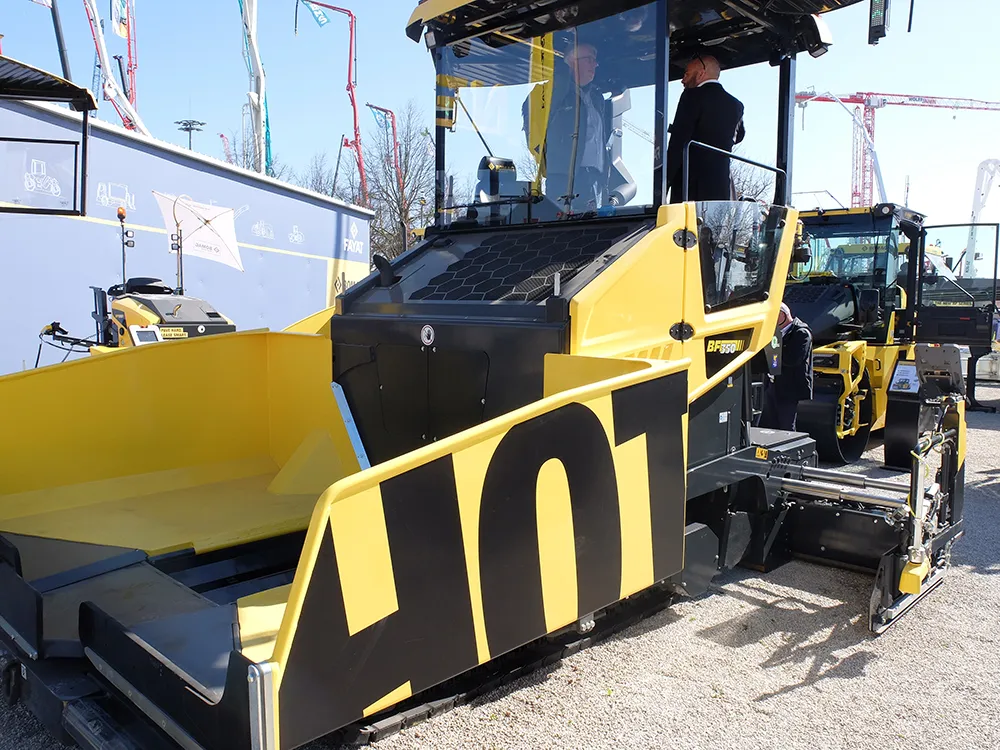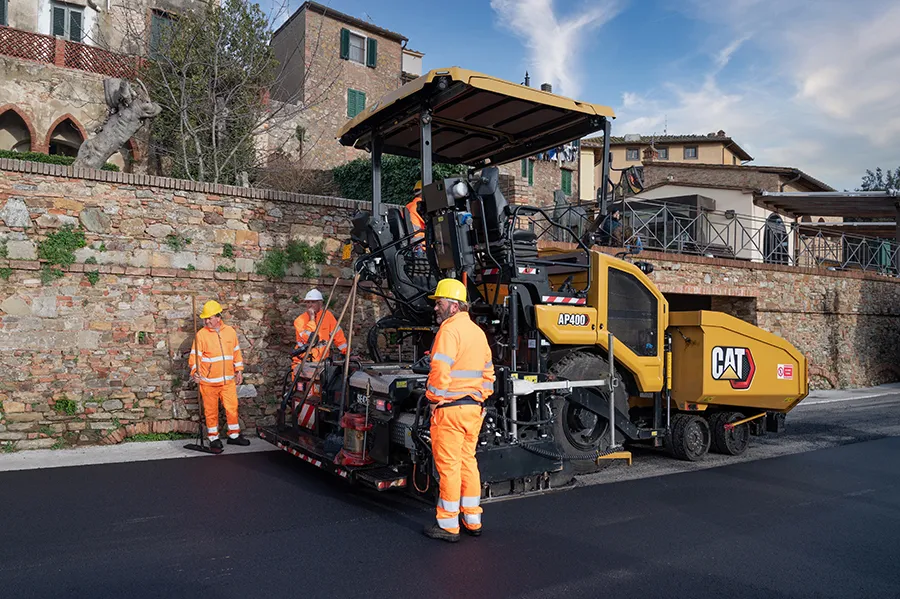
The innovative BOMAP Pave solution offers connected construction capabilities for paving works. BOMAG’s new system allows networking of pavers and rollers, boosting efficiency and quality in asphalt paving jobs.
Pavers and asphalt rollers can be connected within an open, manufacturer-independent system. This allows control of the paving process from asphalt delivery to compaction. It provides users with full transparency in real time, reducing coordination effort and sustainably improving site processes.
With BOMAP Pave and the associated Paving Sensor Kit for temperature measurement, this digital solution allows control and documentation in asphalt construction. The app provides roller and paver operators with relevant information on temperature and compaction in real time.
BOMAP Pave allows roller drivers to see paving temperature and screed geometry, enabling them to adjust rolling pattern with real-time data from the paver. This enables precise compaction while reducing unnecessary passes. Both the area plot of the temperature measurement behind the paver and the compaction results of the rollers can be created as a report at the touch of a button and shared with the company and clients. The app also records paver speeds and stops at the point where they occur.
It is suitable for all pavers and rollers, regardless of manufacturer, is said to be intuitive and can be used on standard Android devices.
Site managers can monitor construction progress in real time from anywhere, avoiding unnecessary site visits and saving time. This significantly shortens construction times, saves fuel and reduces CO₂ emissions. At the same time, continuous temperature monitoring of the asphalt ensures optimal asphalt placement and compaction conditions— a quality feature that considerably extends road lifespan. An integrated material consumption display and material calculator provide the entire team with an overview of current material usage, enabling them to react accordingly. This reduces over or under-deliveries of asphalt mix and saves on material costs.
BOMAP Pave works without any complicated hardware. Its user-friendly interface and visual display of construction progress simplify tasks for machine operators. Similar to a navigation system, drivers are guided to the next work section with pinpoint accuracy. As with all BOMAG solutions, this guarantees a high level of user acceptance.
The networked construction site 4.0 is becoming a reality
With BOMAP Pave, BOMAG is taking digitisation in road construction to the next level. For the first time, the app enables seamless, manufacturer-independent connectivity between pavers and rollers.








